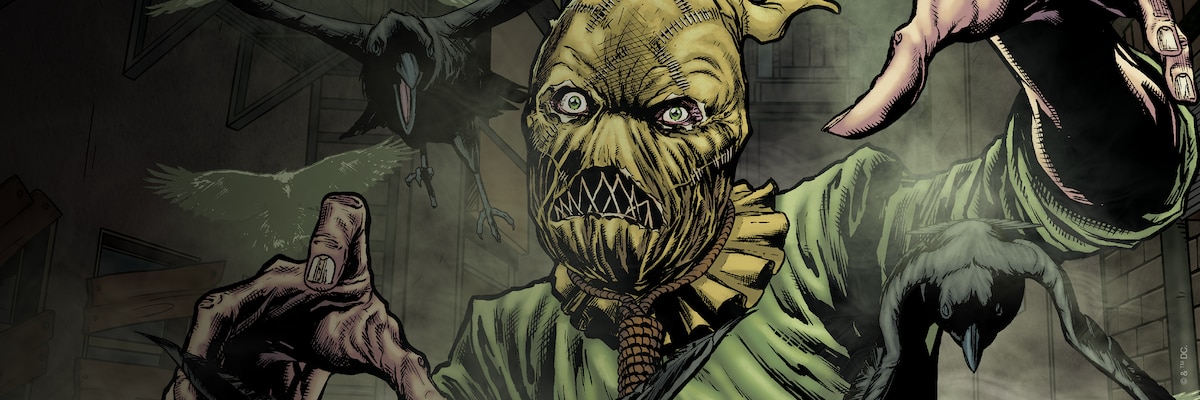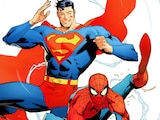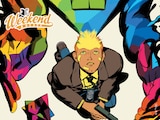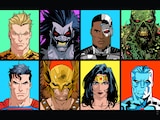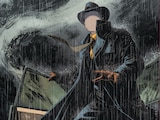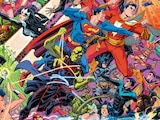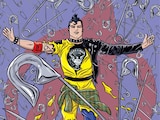The Halloween season is the time we confront, and sometimes indulge in, our greatest fears. In Gotham City, and indeed the greater DC Universe, this is a service that psychologist Jonathan Crane provides year-round, free of charge as the Scarecrow. A few Halloweens ago, we revealed the greatest fears of some of DC’s biggest heroes, as revealed through Scarecrow’s signature fear gas. But that truth-revealing toxin has graced more than just that handful of heroes and villains. Here, we part the curtain on a catalog of a few more notable personalities, their deepest fears revealed by inhaling a full dose of Crane’s infamous toxin.
COMMISSIONER JAMES GORDON, RETIRED

One of the most common reactions I hear from lapsed Batman readers returning to the fold is shock that James Gordon hasn’t been commissioner of the Gotham City Police Department for about six years now. Why would such an important character to Batman history give it all up? At a certain point, you have to confront the fact that you’ve had enough. Take, for example, Gordon’s Scarecrow gassing in 2012’s Batman: The Dark Knight #10. We learn Gordon’s greatest fear is the amassed trauma of what has already occurred in his life—his daughter’s shooting and his son’s descent into violent madness. The Joker learned you can’t break a man like Jim Gordon, but after enough days like this, it’s the reasonable course to start making different life choices.
LEX LUTHOR

As new acquaintances of Luthor through this year’s Superman movie were quick to learn, Superman’s greatest nemesis is a creature of ego. As one of the richest, most powerful men in the world, it’s always that pernicious “one of” qualifier that gets under his hairless skin. Not even Superman—especially not Superman—is exempt from his consuming jealousy. So, when Lex Luthor breathes in the Scarecrow gas in 2009’s Superman/Batman #65, what does he see? Himself brought low in the role of Metropolis’ most humble resident, the most insignificant specimen Luthor can bring himself to conjure the name of: Daily Planet photographer Jimmy Olsen. A game of opposites that the likes of Matt Fraction and Steve Lieber would continue to explore in their own Superman’s Pal, Jimmy Olsen.
SUPERGIRL

Lex Luthor’s Superman complex is all his own, but you can never really blame Supergirl for feeling like she lives in Superman’s shadow. Unlike Superman, Supergirl carries firsthand memories of Krypton with her. Unlike Superman, she arrived on Earth with the symbol of Superman already established to live up to. That means every loss, every failure to measure up to the greatest hero in history, is a burden she bears. When exposed to Scarecrow’s gas one Halloween in 2010’s Superman/Batman #77, we see a young woman carrying the losses of her past alongside her immediate present. The undead of Argo City rising up to place their deaths on her shoulders; accusations of her failures to stop her foes in her contemporary adventures; Superman himself, scowling in disappointment, replacing her in his life with the new Superwoman on the block. With all that to bear, can you really blame her for wanting a drink or two on some red solar planet when she turns 21?
BILLY BATSON

The thing people don’t tell you about being the World’s Mightiest Mortal? You’re still mortal. Imbued with the mythic power of Shazam, the logline of Billy Batson has always been that he’s a kid who can transform into a grown-up, with all the abilities kids lack to take on all of life’s scariest challenges. But as the concept of Shazam has evolved, more has been said about how beneath his stature, Billy Batson is still just a kid, which, Wisdom of Solomon or not, makes him all the more susceptible to fear. In 2020’s Shazam! #12, a tousle with Scarecrow in Gotham City forces Billy to confront the fear that he is unworthy of the power he’s been granted. How can a child be entrusted with so much responsibility? Is any failure to meet the challenges of being the Captain blood on his hands? It’s not the kind of question any kid should have to ask, but it’s the one Billy has to answer.
HAWKMAN
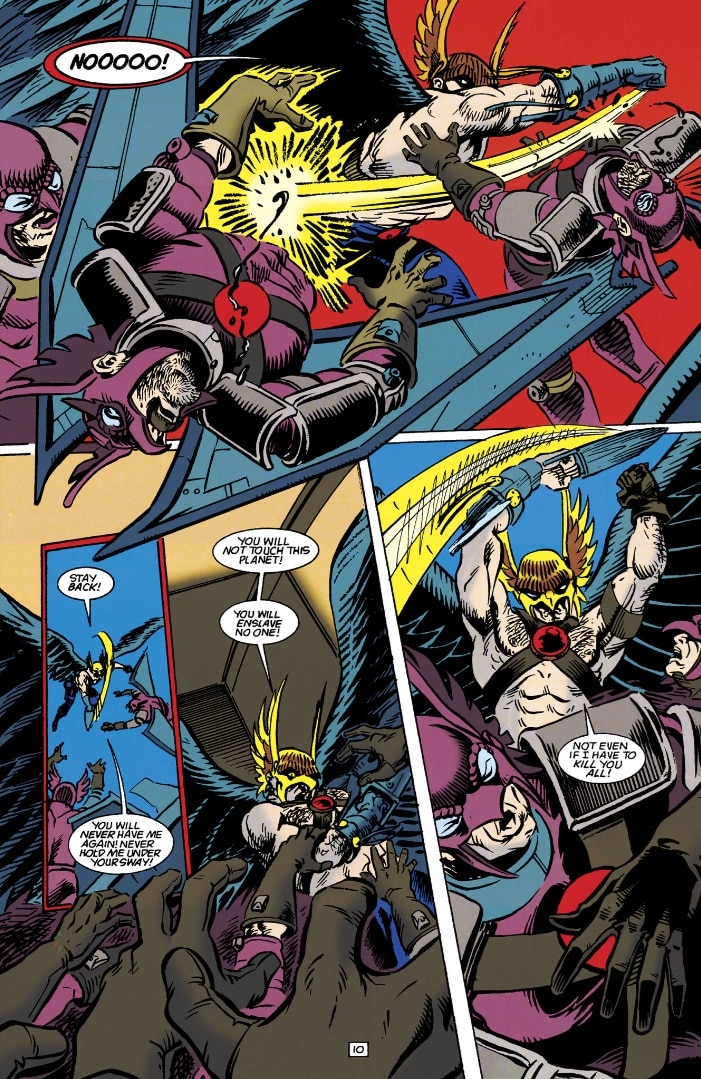
What else could Hawkman’s greatest fear be than his prodigious past coming back to haunt him? In 1995’s Hawkman #26, a Neron-empowered Scarecrow comes to Hawkman’s hometown and projects to him his greatest fear, making the avian alien expatriate see everyone around him as an invading Thanagarian vanguard. Hawkman meets this threat of violence with the language he knows best—further violence. But as Scarecrow’s influence seeps into him, Hawkman is only plagued by further spectres he wishes to escape: animal totem spirits, past lives, the Hawk God itself that casts its long shadow over Hawkman’s life. It gets to the point that Neron himself appears to offer Hawkman a means of escape, offering him the chance to become merely human and give up all the ghosts of his past. But ultimately, Hawkman elects to stay complicated. And bless him for it.
GENERAL ZOD
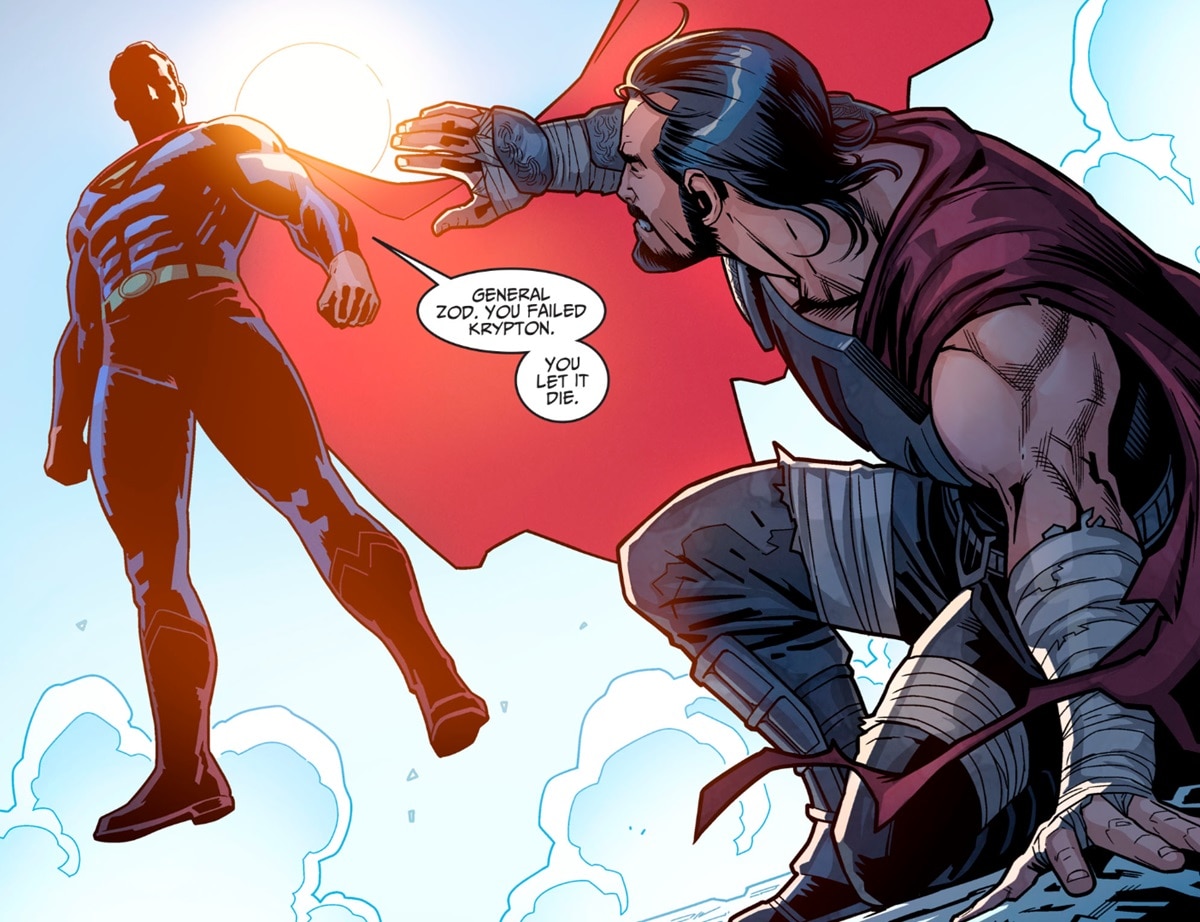
All right, granted, Supergirl’s got it pretty rough. But it could be worse. She could be General Zod. Imagine being the sort of person so obsessed with the supremacy of Krypton that you’re placed in a Phantom Zone prison by your own people for your zealousness, only to emerge years later to a universe where your people no longer exist. In 2017’s Injustice 2 #39, Batman weaponizes Scarecrow’s fear gas against a rampant General Zod. What he sees, much like Supergirl, is the unsmiling visage of the man who has replaced him as champion of Krypton, with the same leveled accusation of failing his planet. Colder. Less theatric. But one which cuts so much deeper, as the truth that the loss of Krypton is his own failure is far more real to him than it was to Kara. Where Supergirl could rely on her friends and her fury to cut through her fear, Zod is paralyzed by that same terror.
ANARKY

What does Lonnie Machin see when exposed to the Scarecrow’s toxin? As the voice of a youth culture disenfranchised by the misuse of the planet’s resources and imbalanced distribution of power, it’s possible that the radical Anarky has the sanest perspective of all under Scarecrow’s fear gas. In 1993’s Batman: Shadow of the Bat #18, as Batman himself suffers a crisis of self-image, Lonnie writhes under the crushing weight of the social ills selling out the future of our world for the short-term gains of an oligarchic few. Boy, it’s a good thing we sorted all that out in the past 30 years, right?
DESAAD

What could it be that scares the chief torturer of the mighty Darkseid, manifestation of evil itself? Is it goodness or love, like some kind of double negative? Death, in the form of the Black Racer? The exhaustion of the very last of his master’s tolerance for him? I dunno, like, rats eating his face, or something? No, nothing so poetic or meaningful. As we see in 2007’s Superman/Batman #40, when you’re a New God of Apokolips, you exist in a state where the concept of fear no longer holds any meaningful purchase, like a fish in a vast, deep ocean with no concept of being wet. Apokolips is no place for a fearmonger to ply his wares, but perhaps a place to learn brand new terrors to bring back home with you.
PENGUIN, MAD HATTER, SCARECROW, BANE, BLACK MASK…AND MANY, MANY OTHER ARKHAM REGULARS

What else? Bats.
Alex Jaffe is the author of our monthly "Ask the Question" column and writes about TV, movies, comics and superhero history for DC.com. Follow him on Bluesky at @AlexJaffe and find him in the DC Official Discord server as HubCityQuestion.
NOTE: The views and opinions expressed in this feature are solely those of Alex Jaffe and do not necessarily reflect those of DC or Warner Bros. Discovery, nor should they be read as confirmation or denial of future DC plans.
